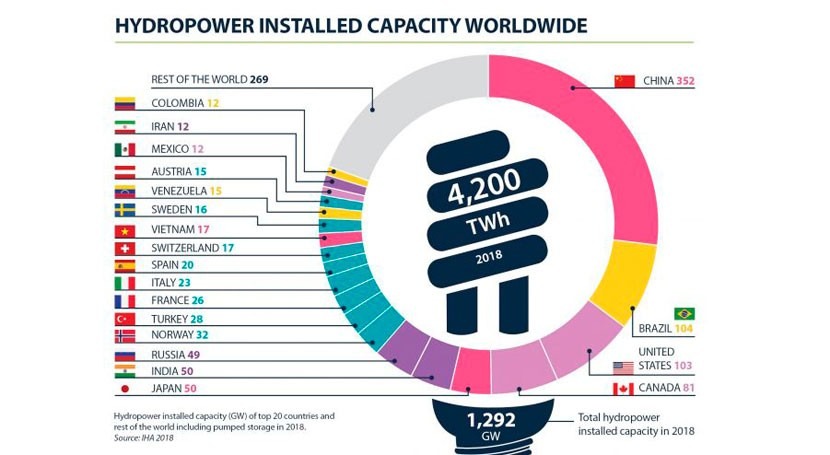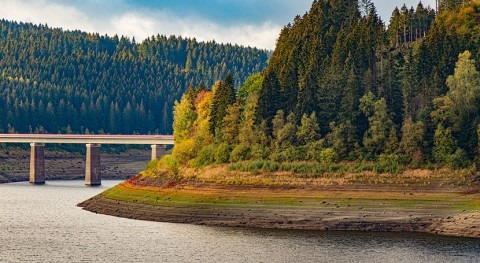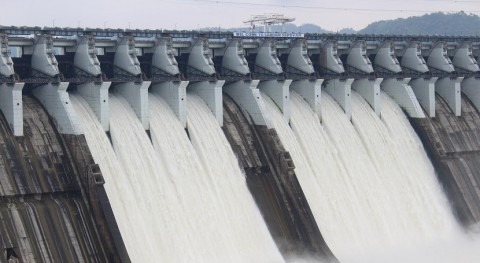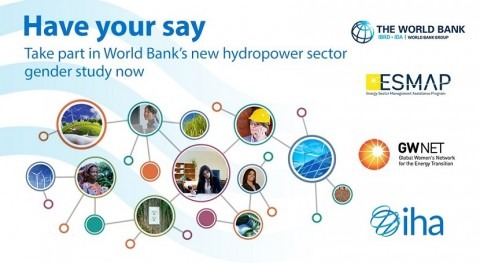More than 21.8 gigawatts (GW) of renewable hydroelectric capacity was put into operation last year, according to the 2019 Hydropower Status Report which is published on the eve of the World Hydropower Congress in Paris.
Government ministers from Canada, Indonesia, Nepal, Uganda and Uruguay contribute policy interventions to the sixth edition of the Hydropower Status Report, each emphasising the need for investment in renewable energy, and especially hydropower, to help countries achieve sustainable development.
Electricity generation from hydropower projects achieved a record 4,200 terawatt hours (TWh) in 2018, the highest ever contribution from a renewable energy source, as worldwide installed hydropower capacity climbed to 1,292 GW.
China added the most capacity with the installation of 8,540 megawatts, followed by Brazil (3,866 MW), Pakistan (2,487 MW), Turkey (1,085 MW), Angola (668 MW), Tajikistan (605 MW), Ecuador (556 MW), India (535 MW), Norway (419 MW) and Canada (401 MW).
Brazil has now become the second largest producer of hydroelectricity by installed capacity, reaching 104.1 GW in 2018, surpassing the United States at 102.7 GW. The world’s largest hydropower producer is China with 352.3 GW of installed capacity.
The Hydropower Status Report, published by the International Hydropower Association (IHA), is an authoritative guide to key trends in hydropower development. Compiled by IHA’s team of analysts, the report presents latest capacity and generation data from more than 200 countries and territories.
The report features policy insights from leading government ministers responsible for hydropower development:
- Canada’s Minister of Natural Resources, Amarjeet Sohi, writes about industry efforts to build partnerships with indigenous communities and create long-term economic opportunities.
- Indonesia’s Minister of National Development Planning, Bambang P. Soemantri Brodjonegoro, explains how his country is committed to reducing GHG emissions by 29 per cent by 2030 through developing hydropower and other renewables.
- Nepal’s Minister of Energy, Water Resources and Irrigation, Barsha Man Pun, writes that his government is aiming to attract foreign investment in hydropower while exploring regional energy interconnections.
- Uganda’s Minister of Energy and Minerals, Irene Nafuna Muloni, emphasises the need to raise investment capital for hydropower development as a way to widen electricity access and support socio-economic transformation.
- Uruguay’s Minister of Industry, Energy and Mining, Guillermo Moncecchi, reports on the strong complementarity between hydropower and other variable renewable energy sources.
The 2019 edition of the Hydropower Status Report presents research into the multiple services provided by hydropower, the importance of building resilience to climate change, and the role of digitalisation and regional interconnections in bringing efficiencies to clean energy generation.
With pumped hydropower storage capacity reaching 160.3 GW in 2018 (up 1.9 GW on 2017), the report also calls for the market framework and regulatory treatment of this clean ‘water battery’ technology to be reformed, especially in liberalised markets.

In total, 48 countries worldwide added hydropower capacity in 2018. The report shows that East Asia and the Pacific once again added the most capacity, with 9.2 GW installed last year. This was followed by South America (4.9 GW), South and Central Asia (4.0 GW), Europe (2.2 GW), Africa (1.0 GW) and North and Central America (0.6 GW).
“Four years on since the Sustainable Development Goals were agreed at the United Nations in 2015, governments increasingly recognise hydropower as playing a vital role in national strategies for delivering affordable and clean electricity, managing freshwater, combatting climate change and improving livelihoods,” write IHA Chief Executive Richard Taylor and IHA President Ken Adams in the foreword to the report.
The Hydropower Status Report was released ahead of the World Hydropower Congress in Paris, 14-16 May 2019, which draws more than 700 delegates from over 70 countries to the French capital. The high-level event is organised by IHA in collaboration with more than 40 partner organisations.

The World Hydropower Congress will bring together a broad spectrum of representatives of industry, government, civil society, social and environmental NGOs, local and indigenous communities, the United Nations, financial institutions and academia.
Online:
Download the 2019 Hydropower Status Report: www.hydropower.org/statusreport
Learn more about the World Hydropower Congress: www.hydropower.org/congress



















